
Demolition
Over the last ten years, Glasgow’s skyline has been changed dramatically by the demolition of many residential tower blocks.
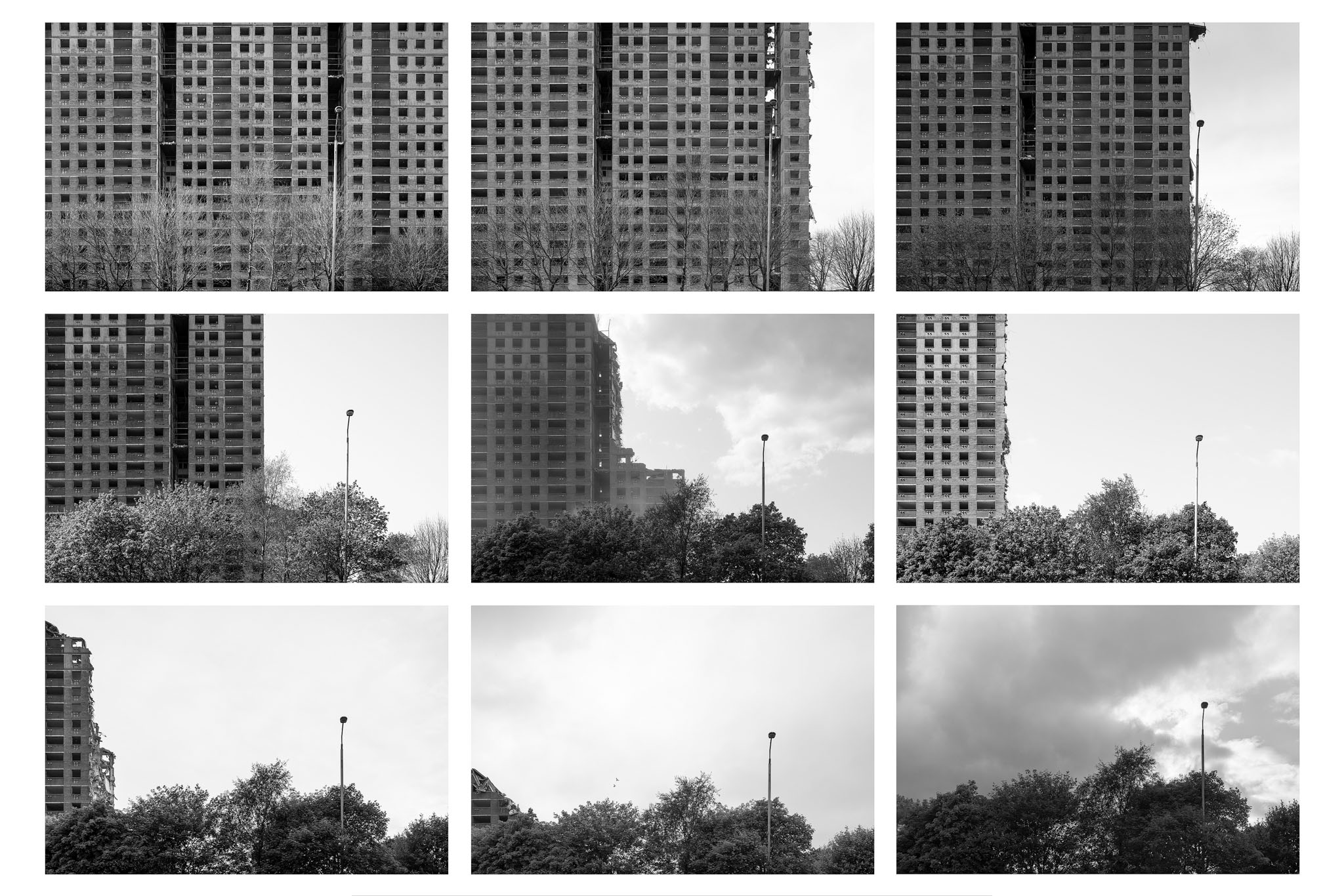
This sequence from Glasgow’s Sighthill Estate was photographed at regular intervals between March and August 2016.

Two massive slab blocks at Sighthill magically vanish over a five month period.
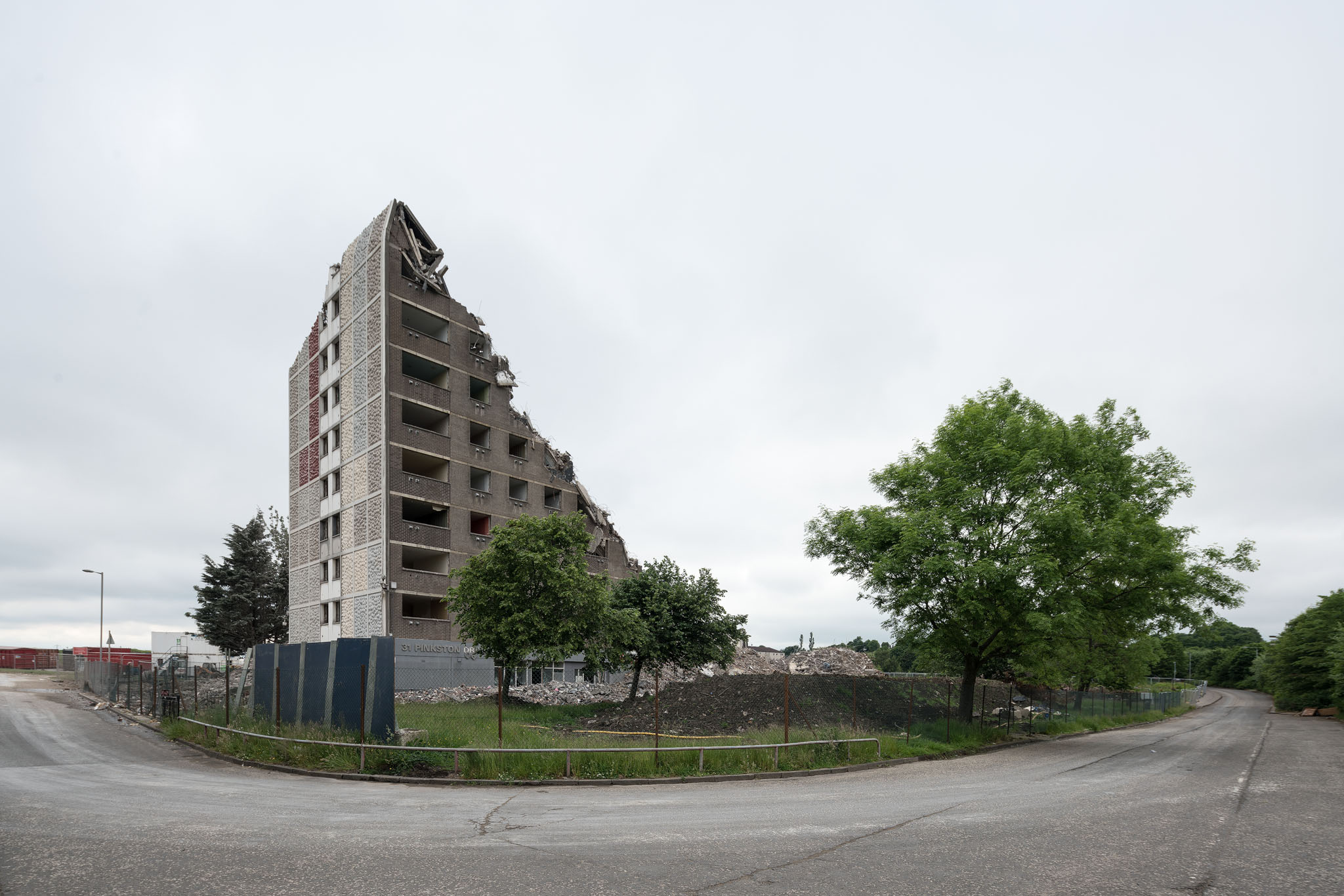
The last remaining vestiges of the Sighthill Estate make a mysterious ziggurat on Pinkston Drive.
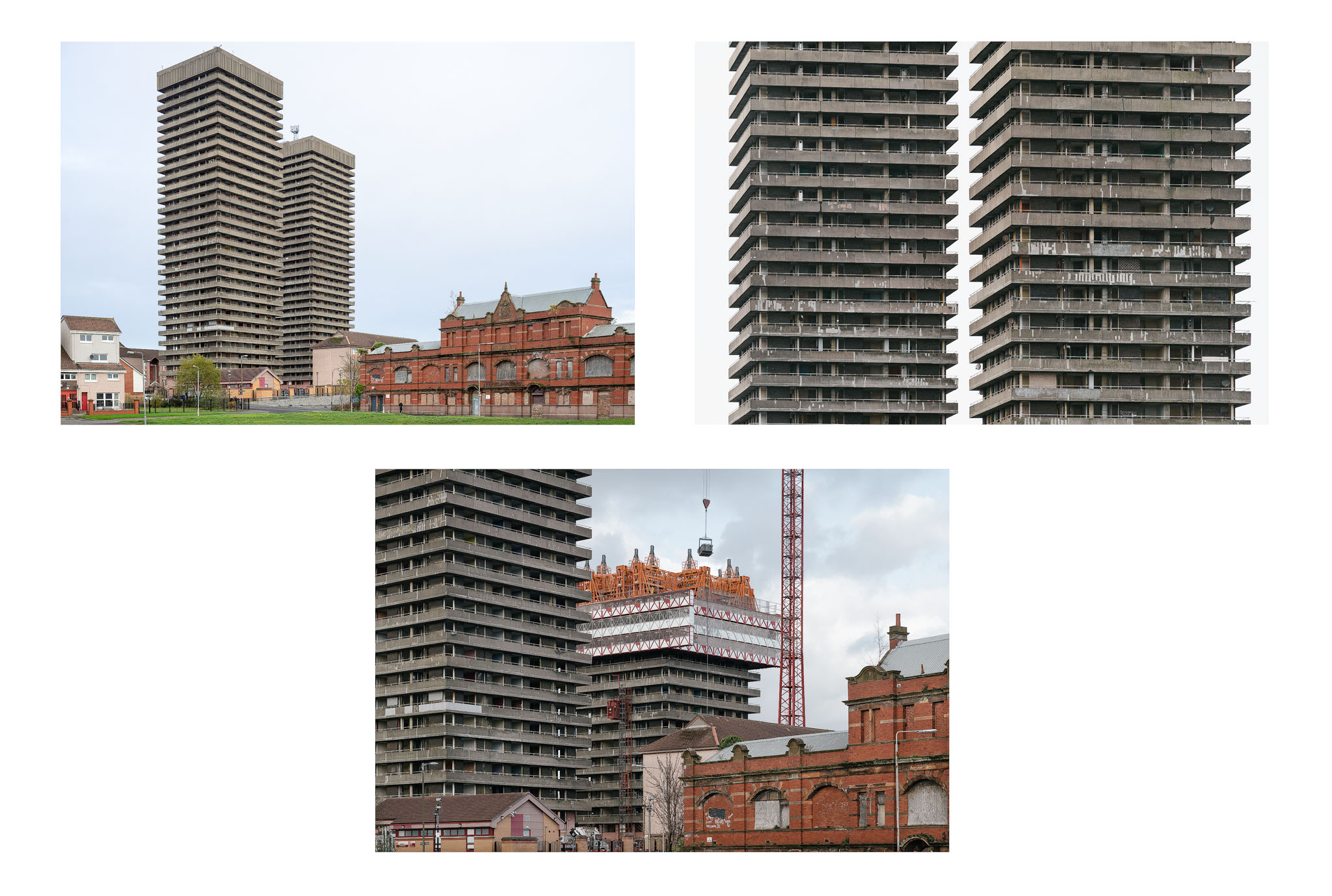
The brutalist Whitevale towers were the tallest residential structures in Scotland. They were slowly nibbled away over an eighteen month period using a deconstruction method known as TopDownWay.

A selection of stripped out high rise facades from various areas of Glasgow.

With the outer skin removed the interiors of many homes are revealed.
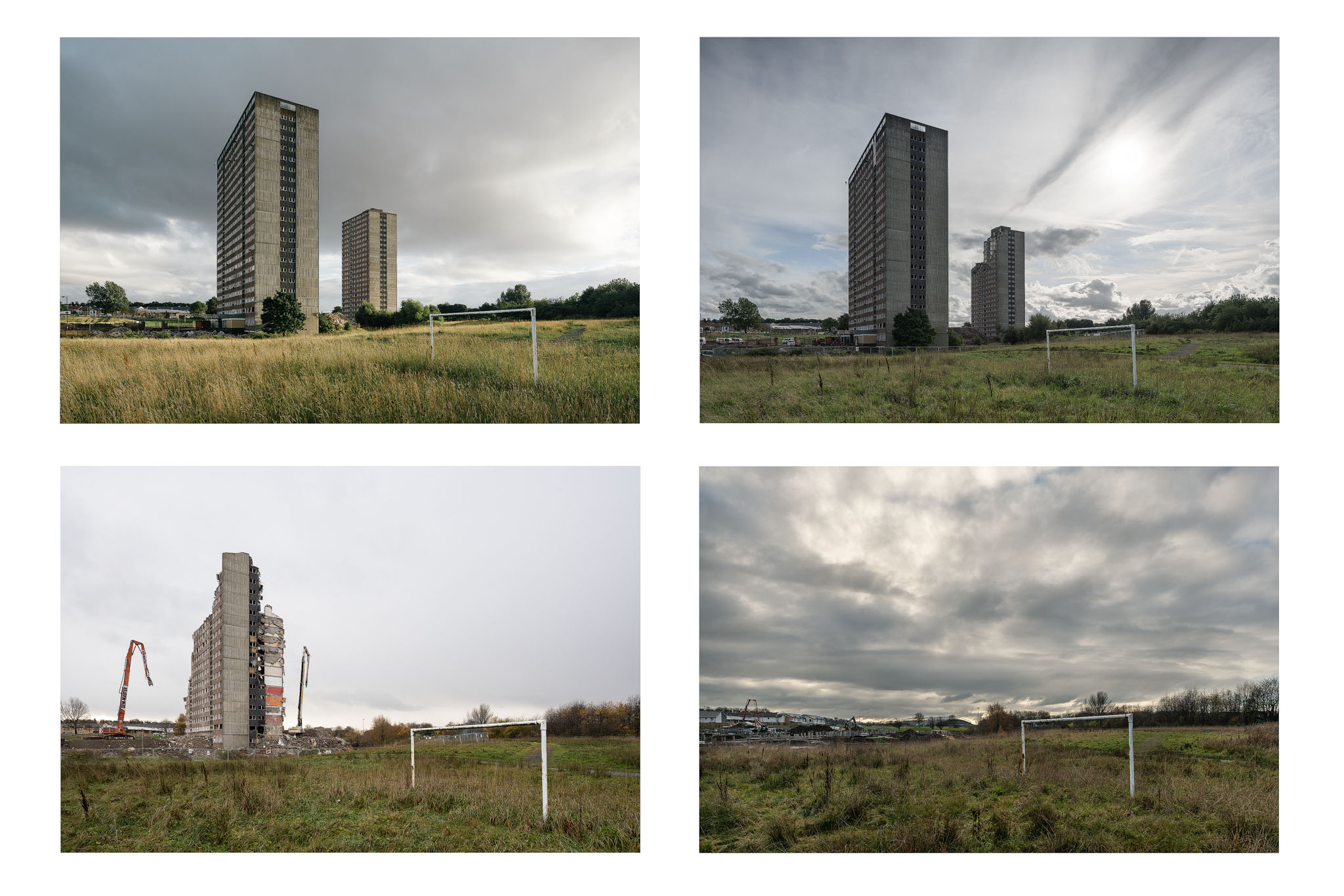
It took visits spaced over a two year period to capture this sequence at Toryglen on Glasgow’s South Side.

This sequence, photographed at the Red Road housing scheme shows how the towers were transformed over a period of two years. After an abortive demolition by controlled explosion (blowdown), two of the blocks were left standing despite having the lower fifteen floors blown out. Look carefully at the fourth frame and notice how far the block on the left has moved during the blowdown attempt.
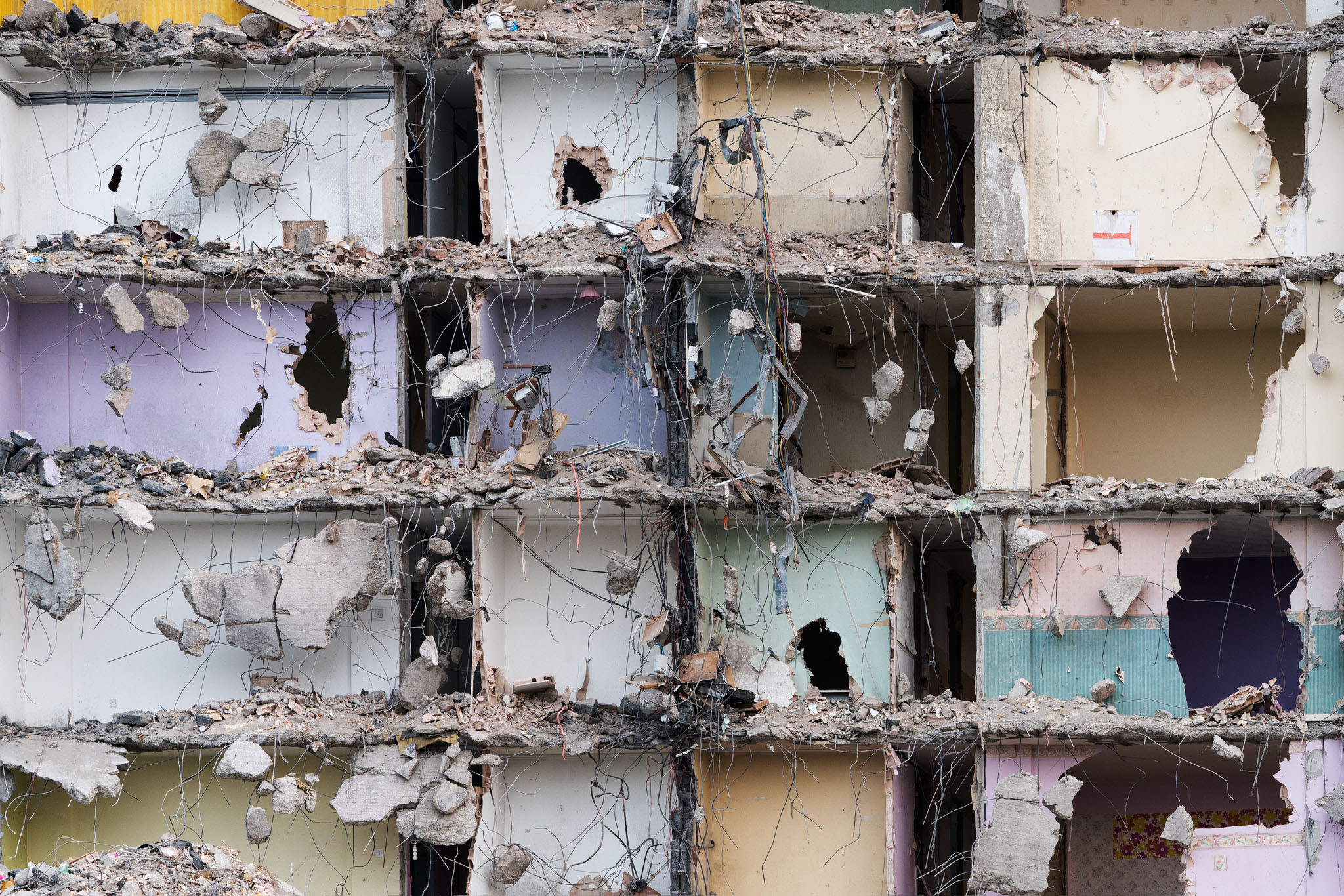
Slow deconstruction creates a dolls house in the sky effect.

Blocks at Red Road were stripped out and wrapped in red netting to enable the safe removal of asbestos fire proofing.

The weighted black skirt (frame 4) is intended to contain the blast of the controlled explosion.

The yellow block was used to house asylum seekers from around the world while the other towers were prepared for demolition.
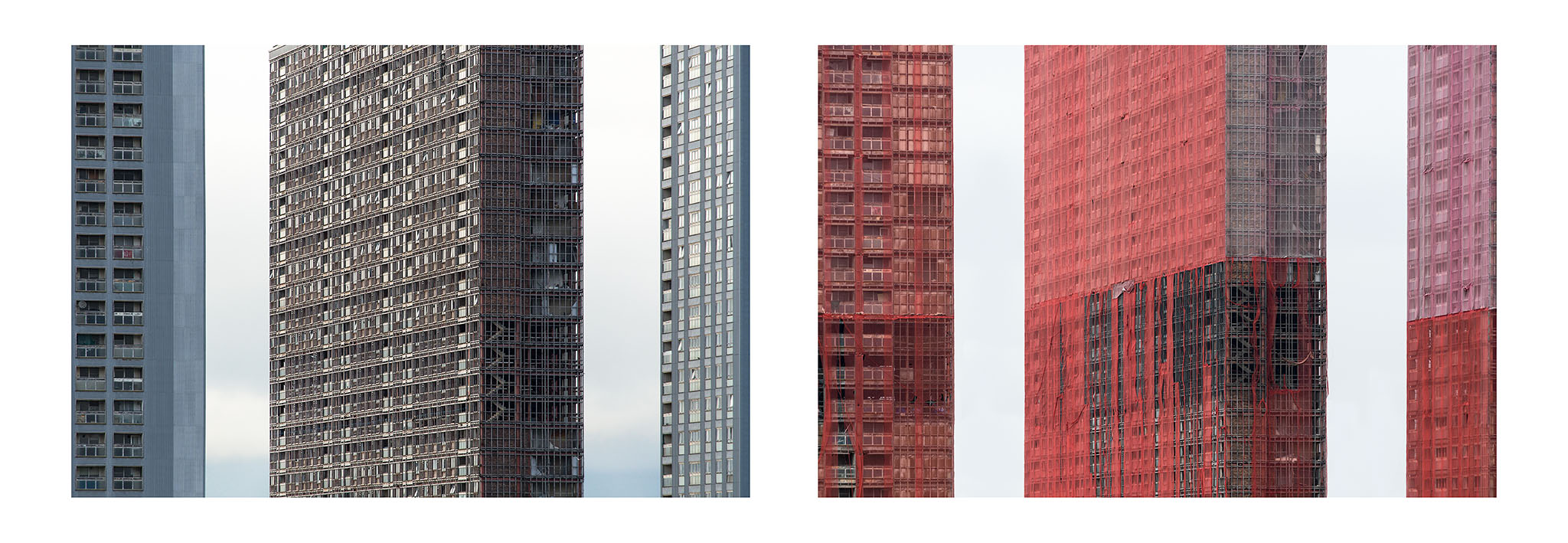
The Red Road scheme consisted of six point blocks and two much wider slab blocks. Here, one of the slabs metamorphoses over an eighteen month period.

Stripped out and ready for the final act…
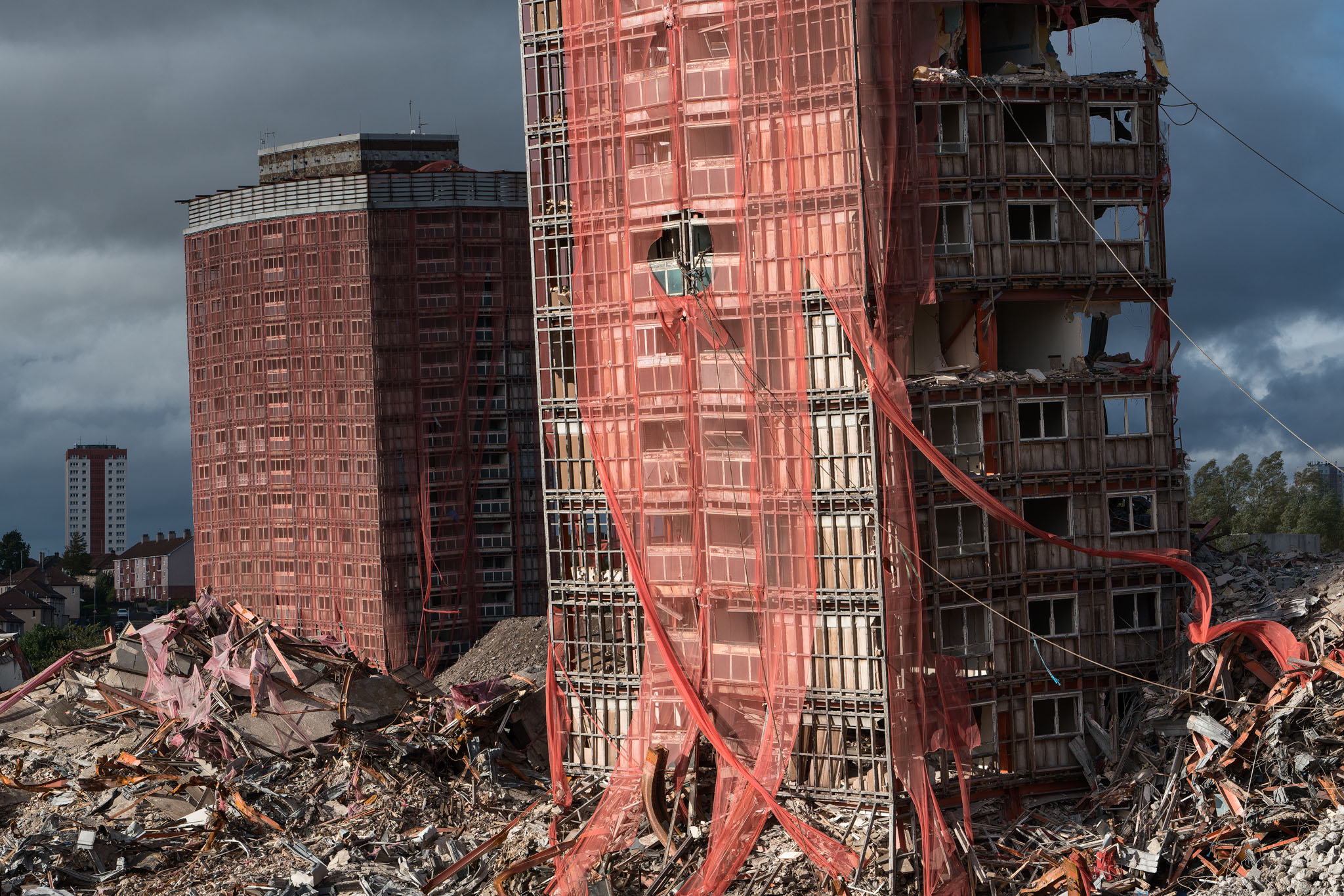
Red Road after the failed demolition. The blocks had to be deconstructed piece by piece using huge machines.

The vertical structures on the slab are retro fitted lift shafts. After a fatal fire in the 1980’s, residents realised that rapid evacuation was impossible with existing elevator provision.
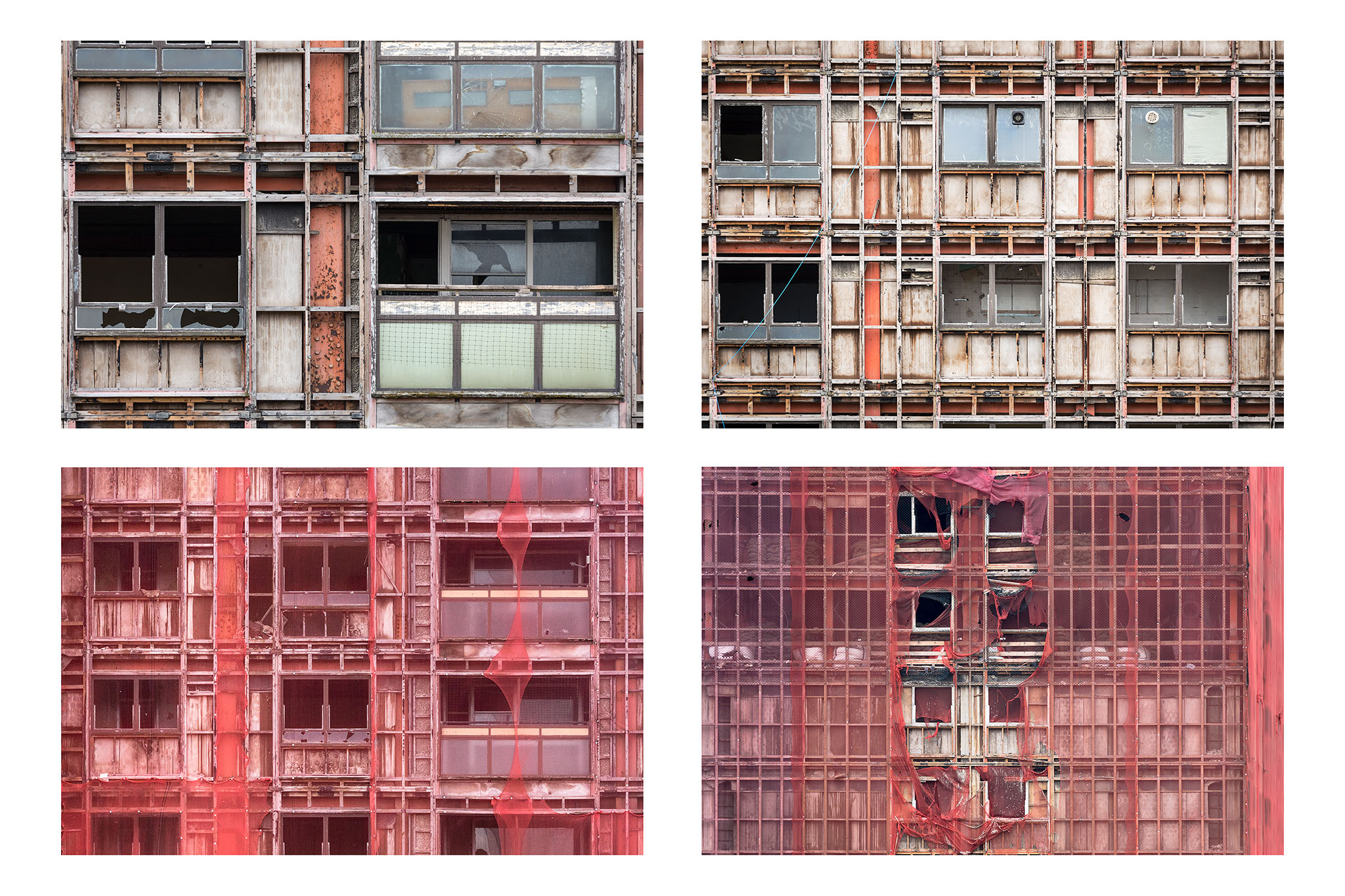
Individual flats at Red Road.

The steel frame which gave the blocks enough strength to survive a fifteen story collapse can be clearly seen on this post blowdown photograph.
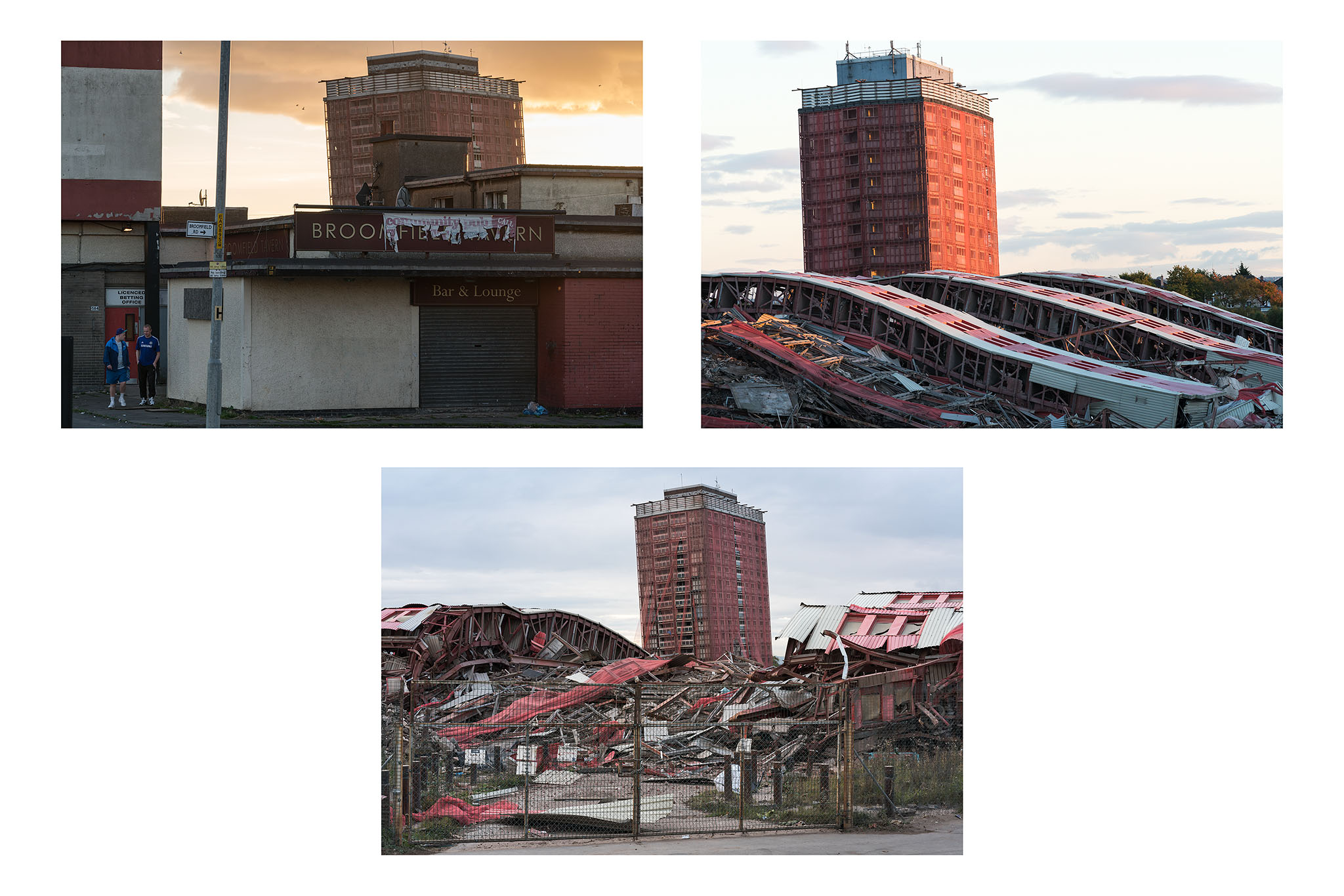
The remains of the last tower leans ominously above the wreckage of the neighbouring buildings.
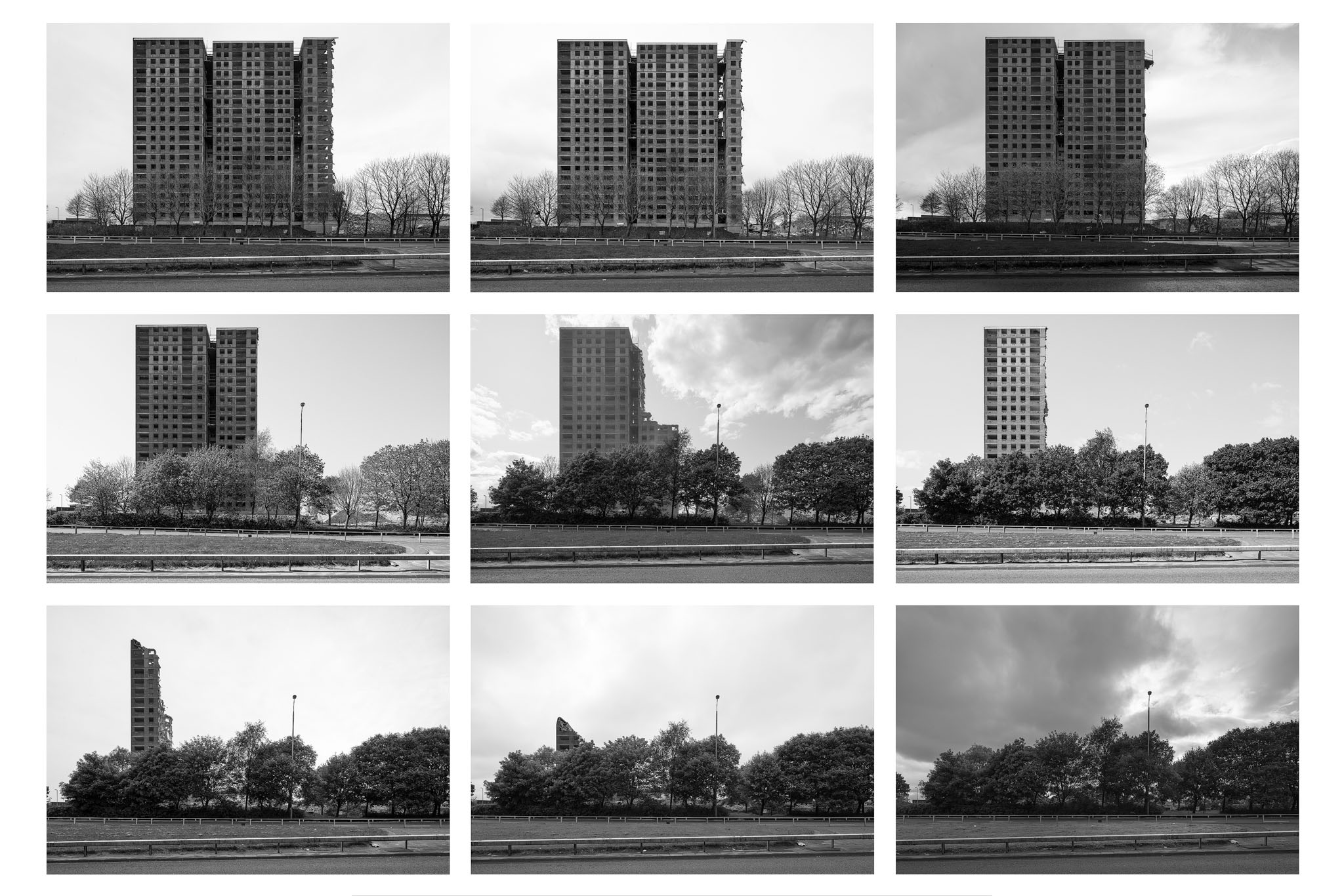
The five month long process of deconstruction at Sighthill.




















